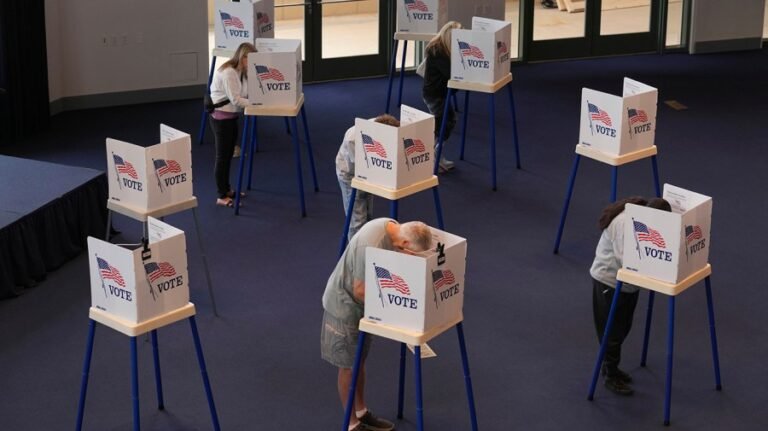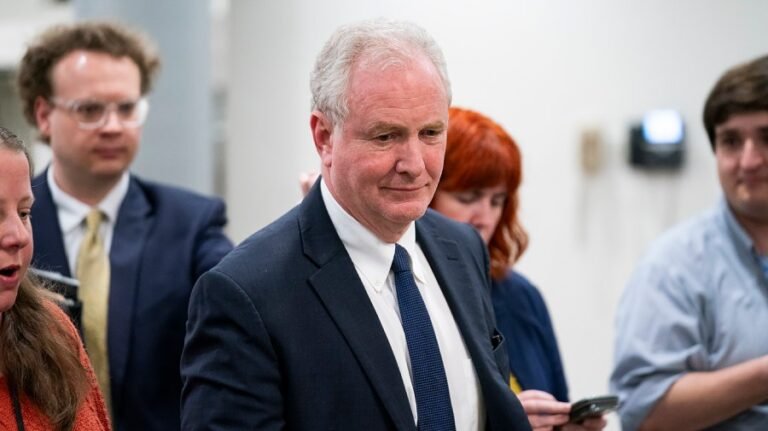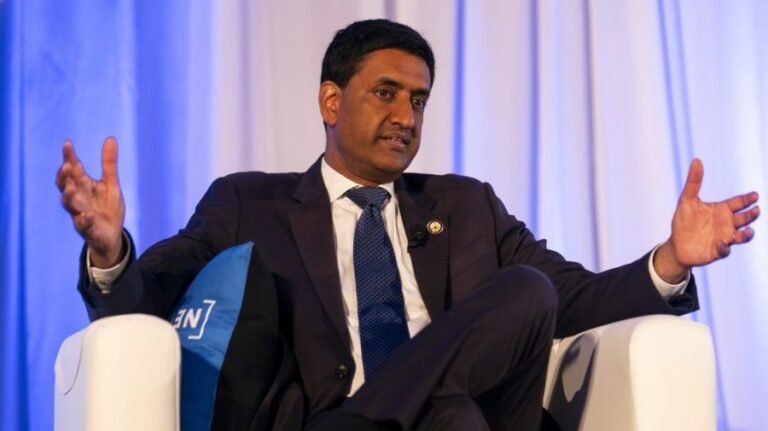President Trump faces steep obstacles in his quest to sway the Federal Reserve toward his economic agenda.
Trump will be able to replace Fed Chair Jerome Powell in less than a year and install a loyalist at the top of the central bank — if he doesn’t make the extraordinary move of trying to fire him before then.
The president has made clear he will only consider candidates willing to heed his call for steep rate cuts, and has blasted Powell for leading a Fed board opposed to them.
While replacing Powell with a loyalist is a key step for Trump’s agenda, experts say it’s far from enough to yield the results the president wants.
Committee inertia
Though Powell has enormous influence over financial markets by virtue of his position, the Fed chair has no direct power to raise or lower interest rates on his own accord.
Fed interest rate decisions are made by the Federal Open Market Committee (FOMC), a panel consisting of the seven members of the Fed board of governors and a rotation of five regional reserve bank presidents.
While the Fed chair also leads the FOMC and steers its conversations, the chair is but one of 12 votes on the bank’s ultimate decision.
“A lackey can’t get in there and just start cutting rates,” former Fed Vice Chair Donald Kohn told The Hill. “You have to remember: The open markets committee is a committee. And by law, there are 12 members of that committee.”
That means whoever replaces Powell could face pushback from the other 11 members of the FOMC — none of whom have endorsed or projected the level of cuts Trump wants.
Trump wants short-term interest rates to be a full 3 percentage points lower than it currently is. The effective rate is currently between 4.25 percent and 4.5 percent, meaning Trump is seeking a level of 1.25 percent to 1.5 percent.
That level isn’t even on the radar of the current FOMC. The lowest single projection for the longer run rate, which pertains to 2028 and beyond, is 2.5 percent.
For this year, the graph of the committee’s views — known as the dot plot — has a horizontal spread that’s pretty evenly distributed around 4 percent, indicating a good deal of agreement among members.
Of the 19 monetary policymakers surveyed in the plot, seven are happy with its current level for the remainder of the year and eight think it should receive only two quarter-point cuts. Two policymakers think it should get just one cut, while another two think it should get three cuts.
Even so, Kohn ceded that committee members have fallen in line behind strong leadership in the past.
This was especially the case for Fed Chairs Paul Volcker, who broke the inflationary spiral of the 1970s with carefully timed interest rate hikes, and Alan Greenspan, who foresaw a spike in labor productivity during the 1990s.
“Chairmen have commanded considerable respect and following on the committee from the time of Paul Volcker on. … They’ve been able to convince other members of the committee that their vision, their ideas about monetary policy and what should happen, are the correct things. They’ve been very strong leaders,” Kohn said.
Firing Powell could backfire
Even if Trump made the unprecedented move of trying to fire Powell directly — which would likely face considerable legal challenges — interest rates overall aren’t guaranteed to go down.
The short-term interbank interest rate is set by the FOMC, but longer term rates are set by bond traders and basic expectations for returns on capital.
Financial analysts think any reductions in short-term rates that would come from removing Powell would be offset by higher yields set in the bond market.
“Lower front-end yields would be largely offset by higher long-term yields,” Matthew Luzzetti, chief U.S. economist at Deutsche Bank, wrote in a Wednesday note to investors.
This would diminish the savings from lower debt service costs associated with lower interest rates — a point Trump has been hammering in his criticisms regarding the Fed’s reluctance to resume its cuts.
“The Treasury would only save $12 to $15 billion through 2027 if the President fired Powell,” the Deutsche Bank analysis found.
Markets take the possibility of Trump firing Powell seriously. The S&P 500 took a dive on reports last week that Trump was moving to fire Powell and rebounded when he reversed his position.
“The market was not able to brush the Powell-firing news off because it was believable Trump would,” economists for LHMeyer wrote in an analysis Monday.
Friction with tariffs
The Fed could find it harder to support steeper rate cuts as Trump’s tariffs continue to rattle markets and boost prices.
Powell said earlier this month that cuts would have resumed if it weren’t for the tariffs.
That puts White House policy and interest rate policy squarely at odds, an impasse that won’t be resolved by judgment calls regarding other parts of the economy.
Trump himself has acknowledged the inflationary effects of his tariffs, saying they’ll make goods more expensive.
“Maybe the children will have two dolls instead of 30 dolls, you know. And maybe the two dolls will cost a couple of bucks more than they would normally,” he said during a May Cabinet meeting.
But outside of tariffs, many economists see conditions in the economy as disinflationary overall.
Raymond James economist Eugenio Aleman commented last week that declining June import prices “continue to support the disinflationary process even as we expect inflation to start moving higher due to tariffs.”
Splits among the contenders to replace Powell
Some in the running to replace Powell have gone way beyond supporting rate cuts in their proposals to harmonize the executive branch with the Fed.
Kevin Warsh, a former Fed governor whose name frequently appears on lists for the possible next Fed chair, went so far as to cast doubt on the 1951 agreement between the Fed and the Treasury Department that split up the duties of debt issuance and money supply management.
He recently floated the idea of “a new accord.”
“The Treasury can say, ‘This is our issuing calendar, and by the end of, let’s say, this administration, we’ll be at an equilibrium rate on the balance sheet,’ so that markets will know what is coming,” Warsh said.
Trump has berated Powell for refusing to lower the debt in order to bring down borrowing costs on the national debt — a move that would shatter more than seven decades of Fed precedent and raise concerns about its commitment to balancing inflation and unemployment.
But current Fed governors have not gone as far, instead supporting meager rate cuts that align with the Fed’s current plans.
Gov. Christopher Waller called for a cut in July at the FOMC’s next meeting.
“I believe it makes sense to cut the FOMC’s policy rate by 25 basis points two weeks from now,” he said last week.
While Waller has previously stressed the temporary nature of tariffs’ effects on prices, he’s also described them in stagflationary terms.
Gov. Michelle Bowman has also sounded positive about cuts.
“Should inflation pressures remain contained, I would support lowering the policy rate as soon as our next meeting,” she said in July.


